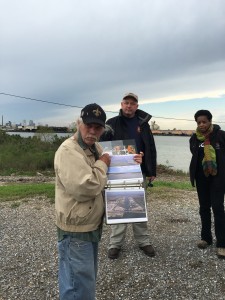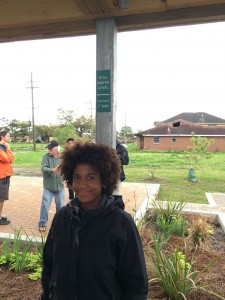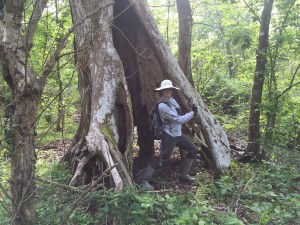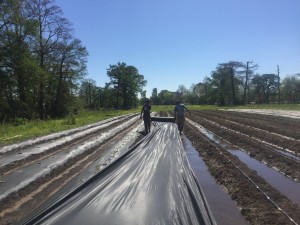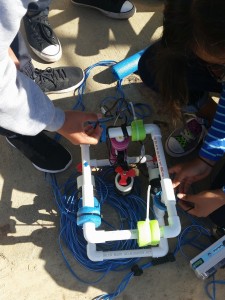To the mother I once knew,
Thank-you for teaching me everything I know and then teaching me how to live without you. Mother-daughter relationships are meant to last a lifetime you said, but you have shown me that is a lie. It has been almost a year since you abandoned and disowned me, and I am proud to say that I have grown more this past year than in my entire life.
As a child you picked me up when I fell and cleaned my cuts, but now as I have grown older, you are the one who makes those cuts. You always told me that you would love me forever and that God would too. Mom you told me to love everyone and to accept everyone as they are, so then why can you not love your daughter as she is? You told me that every person is God’s creation and that he loves them all, so why do you tell me I am going to burn in Hell?
Mother, we both worked so hard through my high school years to get me to college and now you do not want any part of my accomplishments. You missed my high school graduation, my college orientation, move-in day, and every college experience I have had because of vengeance. Will it take you until my college graduation or medical school graduation to let go?
I am tired mother; I am so tired of having this continuous fight with you. I thought we had an understanding between us after all of those countless talks and bonding dates. I am so tired of getting rejected by you and having to beg you for love and attention, I am emotionally drained. Did you not get enough payback when you dropped all of my belongings in front of the school for everyone to see? You have deprived me of a family and then you wonder why I do not continue to reach out to you.
You have taught me to guard myself so much and to never depend on another person like I depended on you because they can leave you in an instant. At times it is even hard to be with the person I love because you have instilled the doubt of people abandoning me on a dime.
It is sad to think that I am not as positive and carefree as I used to be, for all the turmoil you have dragged me through mother. You made it so I had no one but you, I was forever locked in a cage, imprisoned by the mistrust you bestowed upon me. And when you shut me out and left me, I had no one to turn to, I looked for ways out of my situation like going to place not of here. You made me want to take my life because in that moment I felt that no one wanted me and that no one would miss me. Mother you were wrong for doing that to me, but I know you cannot help your selfish personality.
I am sorry that I could not be the person you wanted me to be mother, but I love who I love and I cannot help it.
Sincerely,
Your daughter Kayla Ann
Lesbian and gay adolescents face many extreme hardships, especially coming out to their family/ parents about their sexual orientation. Often times families are uneducated about homosexuality and are closed minded due to their religious beliefs and homophobia. Many youths and even adults continuously push off the thought of announcing their sexual prefaces to their parents, for fear of being disowned and a disappointment. How can we better prepare parents for the possibility of their child coming-out or prepare these teens for the hardships that come along with revealing themselves to their families? We face a chance of rejection every time we disclose our sexual preferences to a new person. Is it not bad enough that you have to do that with almost every person you meet? I at times have felt very scared because I have met a wonderful person and friend and it is terrifying that I have to tell them who I choose to love and that they might not accept that. Being lesbian is not WHO I am, but it is a part of who I am. Being disowned by my entire family and closest sibling because of who I choose to love is very difficult. For instance, if my own family does not accept me for who I am than who will because even my own mother does not.
The period of adolescence and teen years are already confusing and full of turmoil without adding the result of being gay to it. 10 to 12% of all youth are lesbian, gay, or bisexual (Sanders, 433). Surprisingly to most people adolescence realize that they are gay or lesbian at a young age, for instance around 12 or 13 years old (Sanders, 434). Oftentimes they take comfort in telling a specific family member or professional person they trust. This can lead to issues of their parents finding out from another person besides their son or daughter which only causes more turmoil within the family. When they become self aware of their homosexuality the second step is to develop resilient ways to a socially oppressive norm when disclosing their sexual preferences (Sanders, 434). With all of these aspects comes the danger of being identified as a gay teen, take Matthew Shepard who was an out of the closet young adult that lead him to being beaten unconscious and left to die at the age of 21 in 2000.
What does it mean to be gay? What are the hardships? In the 70s homosexuality was considered a mental illness, that was less than 50 years ago. The gay population as a whole is becoming more widely accepted with the teachings of tolerance and diversity, but there are still many difficulties that homosexual people are required to overcome. There are relatively accepted benefits within society which are lost to homosexual persons’, such as loss of friends due to sexual orientation, lose job security, prone to harassment, lose of legal protections that heterosexuals automatically have, and disowned by religion (Borhek, 126). These are just some of the aspects of life that homosexual people automatically surrender when they reveal their sexual identity. It has not occurred until recently that some states are legalizing gay marriage, for they see it as a constitutional right to marry whomever you choose. So yes society has gone from thinking homosexuality as a mental illness to legalizing marriage among them, but gay people still take on the heavy task of oppression. With this being said it is legitimate that adolescents fear the act of being known, for the result may be harmful to their family and the person’s financial, psychological, and home life.
The question that is on every gay or lesbians’ mind is “Should I tell my family and friends?”. Most teens put off exposing their true identity until they are young adults for specific reasons, “… to say nothing until he or she is old enough to be self-supporting and living in his or her own home” (Borhek, 124). In other words, these adolescents are afraid of being disowned by their family and becoming homeless resulting in jobs such as prostitution, so they wait until being completely independent. For those who do disclose their sexual orientation to their families at a young age, “… counseling can still be beneficial.” (Borhek, 124). Personally I received sole counseling from the state after my parents threw me out and it did not help my psychological status, without my family partaking in it.
The next question is how do the parents feel and why do they have negative reactions to their child coming out homosexual. Parents often feel a sense of shame and guilt for raising a “gay” child due to the values of society where that is not normal, so they feel as if they have failed in some way (Armesto, 147). For example, “… proneness to shame and proneness to guilt may lead to different ways of experiencing and handling interpersonal events such as a child disclosing his homosexuality.” (Armesto, 148). Since the parent feels shame upon themselves for doing something wrong they portray that as a negative connotation which causes their reaction to be negative towards their child’s sexuality. They also look upon cultural, religious, and personal ideals which conclude that being gay is a very difficult lifestyle with many obstacles. There are many support groups and information regarding the families of gay teens and the process of coming out. The one fact that is not stated in the research is that a parent should love their child unconditionally, no matter if they disagree with their personal choices.
Unfortunately, oppression is a great factor when regarding the gay community and more so specifically for adolescents. With that being said coming out to your family can be a life changing decision, but it is a responsibility to yourself to be truthful about who you are. Yes, parents might reject you and throw you out in the street, but as they say if there is a will there is a way. Coming out of the closet is a very scary thing, especially when you are required to do it with every person you meet. Most people do not recognize the obstruction of being gay, it entails that you are fearful for your life and the acceptance of those closest to you. So mother I end this with the hope that you have a better understanding of who I am and what your lack of acceptance does to me; I will cease to apologize for WHO I am.



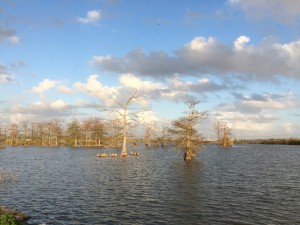 I have grown from this trip. It’s one thing to learn about a place via photos and lectures, but to really learn about a place you have to go there, talk to the people, and experience the culture, history, politics, and landscape. New Orleans is really such a unique place, everything about it is different than what I am used to. Seeing the powerful Mississippi River, salt water eroded marshes, swamps, and Cypress trees made me appreciate
I have grown from this trip. It’s one thing to learn about a place via photos and lectures, but to really learn about a place you have to go there, talk to the people, and experience the culture, history, politics, and landscape. New Orleans is really such a unique place, everything about it is different than what I am used to. Seeing the powerful Mississippi River, salt water eroded marshes, swamps, and Cypress trees made me appreciate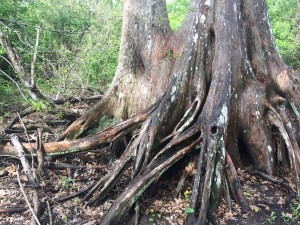 a new kind of ecosystem. Seeing coastal erosion and extreme wetland loss was very eye opening to me.
a new kind of ecosystem. Seeing coastal erosion and extreme wetland loss was very eye opening to me.
